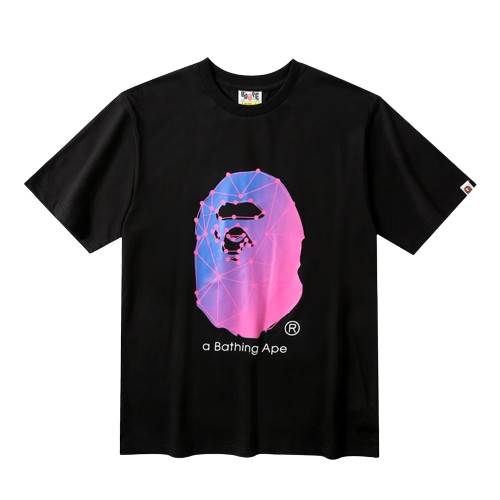In a world where beauty and skincare products are ubiquitous, understanding the regulations surrounding cosmetic labels is crucial for both manufacturers and consumers. Cosmetic labels not only provide essential information but also ensure safety and compliance with industry standards. This blog post will explore the must-know regulations for cosmetic labels, helping brands navigate this complex landscape while also informing consumers about their rights and expectations.
Understanding Cosmetic Labels and Their Importance
Cosmetic labels serve multiple purposes. Primarily, they inform consumers about the product’s ingredients, usage instructions, and potential allergens. Furthermore, they play a vital role in branding and marketing, often being the first point of contact between a product and its potential buyer. With the increasing focus on safety and transparency, cosmetic labels have become more critical than ever.
Regulations surrounding cosmetic labels vary by country, and it’s essential for brands to be aware of these differences. Understanding the legal requirements helps ensure compliance, which can prevent costly recalls and damage to brand reputation. This knowledge not only protects businesses but also empowers consumers to make informed choices about the products they use on their skin.
The Role of the FDA in Cosmetic Labeling
In the United States, the Food and Drug Administration (FDA) oversees cosmetic labeling. Under the Federal Food, Drug, and Cosmetic Act, cosmetics are defined as products intended for cleansing, beautifying, promoting attractiveness, or altering the appearance without affecting the body’s structure or functions. As such, all cosmetic labels must adhere to FDA guidelines.
One critical regulation is the requirement for accurate ingredient listing. Ingredients must be listed in descending order of predominance, meaning that the ingredient used in the highest concentration appears first. This transparency allows consumers to make informed choices, especially if they have allergies or sensitivities. Additionally, certain terms like “hypoallergenic” or “non-comedogenic” are not regulated by the FDA, so brands must be careful about making claims that could mislead consumers.
Labeling Requirements for Ingredients
Another essential aspect of cosmetic labels is the inclusion of specific information about the ingredients used. Under the FDA regulations, all cosmetic labels must include a complete list of ingredients, even those that may be used in very small quantities. This requirement ensures transparency and allows consumers to make choices based on their preferences and needs.
The International Nomenclature of Cosmetic Ingredients (INCI) system is commonly used to standardize ingredient names across products. By adhering to the INCI naming conventions, brands make it easier for consumers to understand what they are applying to their skin. Moreover, certain ingredients are prohibited or restricted in cosmetics due to safety concerns. Brands must stay informed about these regulations to ensure compliance and protect consumers.
Safety and Warning Statements
In addition to listing ingredients, safety and warning statements on cosmetic labels are crucial for consumer protection. For instance, products containing potential allergens or irritants, such as fragrances or essential oils, should clearly indicate these ingredients. This information helps consumers avoid products that may cause adverse reactions.
Furthermore, specific products may require cautionary statements or instructions for use. For example, products meant for external use only must clearly state this on the label. Additionally, items that should be kept out of reach of children or that contain ingredients requiring special handling must include appropriate warnings. Such clarity not only complies with regulations but also enhances consumer trust.
The European Union’s Cosmetic Regulation
While the FDA governs cosmetic labeling in the United States, the European Union (EU) has its own set of stringent regulations known as the EU Cosmetics Regulation. This comprehensive framework applies to all cosmetics sold within EU member states, ensuring a high level of consumer safety and product quality.
Under this regulation, all cosmetic products must undergo a safety assessment before they can be marketed. Additionally, the labels must provide specific information, including the name and address of the responsible person, the product’s function, and a batch number or production code. This level of detail ensures that consumers can trace the product back to its manufacturer, which is crucial for accountability in case of adverse reactions.
The Importance of Ethical Labeling Practices
In recent years, ethical labeling practices have gained prominence in the cosmetic industry. Consumers are increasingly aware of the ethical implications of the products they use, leading to a demand for transparency and responsible sourcing. As a result, many brands are adopting practices that go beyond mere compliance with regulations.
For example, brands may choose to indicate that their products are cruelty-free, vegan, or made from sustainably sourced ingredients. While these claims are not universally regulated, they often resonate with consumers who prioritize ethical considerations. However, brands must ensure that such claims are substantiated to avoid misleading consumers and potentially facing legal repercussions.
The Future of Cosmetic Label Regulations
As the beauty industry continues to evolve, so do the regulations surrounding cosmetic labels. With growing consumer awareness and advocacy for sustainability, brands may face increasing pressure to comply with stricter labeling guidelines. For instance, the trend toward clean beauty means that consumers expect clearer information about ingredients and sourcing practices.
Moreover, the rise of e-commerce presents unique challenges for labeling. As products are increasingly sold online, ensuring that all required information is readily accessible is crucial. This may involve providing additional details on websites or using augmented reality technology to offer consumers interactive label experiences.
Conclusion: Navigating the Complex Landscape of Cosmetic Label Regulations
Understanding the must-know regulations for cosmetic labels is essential for both brands and consumers. For manufacturers, adhering to these regulations ensures compliance, builds trust, and protects brand reputation. For consumers, being informed about labeling practices empowers them to make educated choices about the products they use.
As the industry evolves, both brands and consumers must remain vigilant about changes in regulations and trends in ethical practices. By prioritizing transparency and accountability, the beauty industry can foster a safer, more informed marketplace.






